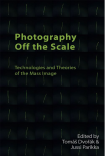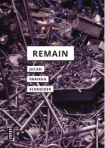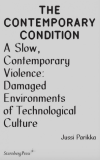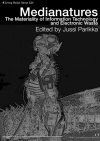Emoticon, 1881
This article on Rhizome inspired me to post this picture relating to a sort of a media archaeology of emoticons — before the digital, before mass communication over networks, and demonstrated as a form of “typographical art”. This one is from the Puck magazine, 1881.
For a more in-depth excavation of emoticons, we should look at the various work on categorisation of emotions across humans and animals that was a key topic of research also in the 19th century. It relates to the importance of the face before the facebook.
How about the face, expression and emotion more generally? For instance Charles Darwin was interested in the evolutionary aspects of faces and expressions, and at the centre of much interest lies a curious book by the neurologist Guillaume-Benjamin Duchenne de Boulogne: The Mechanism of Human Facial Expression, or an Electro-physiological Analysis of the Expression of the Passions Applicable to the Practice of the Fine Arts (1862)
Duchenne worked at the Salpêtrière hospital which later became known for its hysteric (female) patients, and the variety of new media based experiments and empirical methods by Charcot. In Duchenne’s work, the face, the expression was something that was the shared ground between humans and animals in these experiments.
Duchenne was in the 1860s using photography as a method to tap into the animal forces of the face. Photography offered him a way to capture the formal features of expressions. The patients were the models. Yet, two different time scales clashed. Photographic processes demanded a lot of time and holding the face still was difficult –Duchenne was using as his models mentally and physically ill patients. Instead of making photographic process quicker, he slowed down the body. By applying electrodes in right places of the face, the subject froze and kept the expression long enough –  it became more than a fleeting expression, and an index for scientific purposes (indeed, Darwin was using these photographs, see Phillip Prodger’s Darwin’s Camera, Oxford University Press, 2009, 81-83).
it became more than a fleeting expression, and an index for scientific purposes (indeed, Darwin was using these photographs, see Phillip Prodger’s Darwin’s Camera, Oxford University Press, 2009, 81-83).
For his own research and visualisation purposes, Darwin used engravings made from the photographs, where the electrodes were removed. This made the expressive faces slightly more natural, of course. An enforced typology of the face and emotion.



















Those photos from Duchenne are deeply disturbing for a variety of reasons. I wonder how much could be learned from them anyway given the context. Shudder.
Those photographs from Duchenne are disturbing for a number of reasons. What is the emoticon for shuddering in horror please?
I know, really …powerful and filled with a certain horror in them. I guess the emoticon for horror might be taken from one of those?
Yes. Just goes to illustrate the limits of what an emoticon can really convey… Sorry for the double comment!
James Emmott at Birkbeck is just finalising his phd work in this area right now (in the spirit of generating connections)
thanks for the tip – have to keep eyes/ears open for his work.